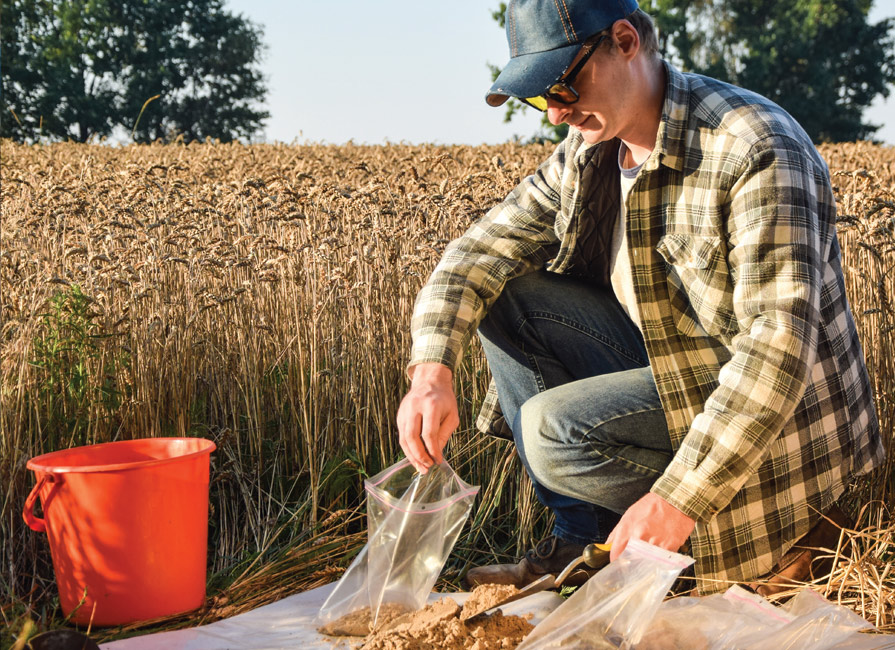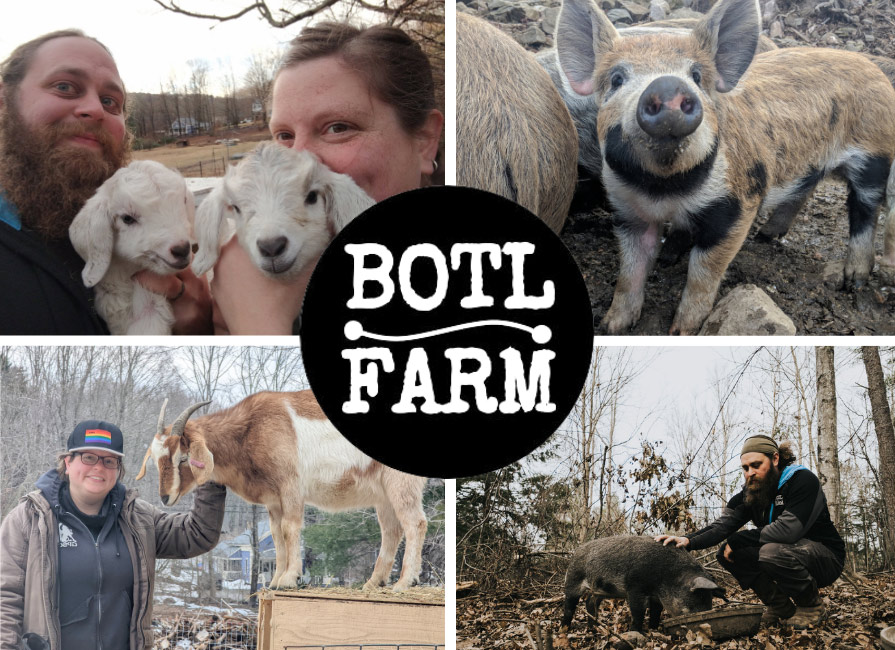Soil nutrient management is a vital part of regenerative farming and applying climate-smart practices can…
Walk a Mile in a Farmer’s Boots
Like millions of fellow Americans, you work hard every day to do the best job you can and provide for your family. Now imagine how disheartening it must be to know your boss or supervisor or customers are being told from every direction that the work you are doing is ‘bad’ or ‘wrong’—or even ‘dangerous’? Well, you have just gotten a small insight into what it’s like being a farmer today.
While many advocacy groups working in food and farming mean well, and have useful ideas on how we might achieve sustainable food and farming in the future, the cacophony of ‘foodie’ voices dictating how farmers should or shouldn’t farm is driving a wedge between urban consumers and rural communities (and the farmers who make their livings there). To make matters worse, some of the loudest voices in the food movement are arguably driven by questionable—and even extreme—personal and emotional beliefs, particularly when it comes to the future role of food animals.
As a former farmer myself, I can tell you now that some of the campaigns, advertisements and social media messaging emanating from the food movement today are ill-considered, unnecessarily divisive and, in some cases, wholly unscientific. At their worst, these campaigns alienate—and even make enemies of—the very farmers and ranchers who we need as partners in any real solution to the challenges facing agriculture.
We have to first seek to understand one another, and we as consumers must acknowledge that we cannot hope to feed America sustainably without the support of the many thousands of family farms and ranches across the continent who currently supply commodity markets. Yet these are the very people who feel under attack by the food movement.
Bombarding the beleaguered farming community with constant criticisms or unrealistic, unproven and unscientific demands isn’t engaging in solutions. One of our immediate tasks must be to reach out to the farming community with a clear message: WE NEED YOUR HELP. Rather than dictating from the top-down, food advocates would do better to take a step back and learn about the real challenges and needs of rural communities and the farming families who live there before they start devising complex blueprints for our future farming and food distribution systems. Only once we identify commonalities with farmers—and establish trust—can we begin to find ways of working together towards mutual goals.
Food advocates also need to consider the potential impacts of the changes they seek. Are they practical, achievable and financially viable? How do you know? While it might seem like a straightforward matter on paper, transitioning a farm’s production system to high-welfare, sustainable practices can be very costly, time-consuming and extremely risky—and that’s before one even considers if there is an appropriate market. Suggestions from some food advocacy groups that farmers should “set up a farm store” or “sell through a farmers’ market” demonstrate ignorance about the realities most farmers face (not to mention how most Americans source their food). Even if they wanted to—and most don’t!—very few farmers have an urban population on their doorsteps, let alone the additional skill sets or training support or the time, extra staff and necessary investment so vital for success in the direct-sale marketing models. As you can imagine, this kind of glib ‘business advice’ is particularly irksome when it comes from people who have no experience of practical farming, let alone having had to pull a calf from a heifer at 3 a.m. in the freezing rain. Would you risk your family’s livelihood based on advice from an organization that doesn’t have any practical farming knowledge, experience or proven business expertise in your field? No, neither would I.
The reality is that most ‘average’ farmers are struggling to pay bills and support their families. According to the USDA, just over half of U.S. farm households lost money on their farming operations in recent years, and most farmers are working two or more jobs off-farm just to make ends meet. Over the last three decades, dramatic structural changes in the food industry have enabled corporations to effectively take control of food production and supply—particularly in the red meat and poultry sectors. According to Foodopoly author and activist, Wenonah Hauter, just 20 food corporations produce most of the food eaten in the U.S. Four meatpackers control 80 percent of the beef market, with a similar situation in pork and chicken meat production, while four large food chains, including Walmart, control more than half of all grocery store sales. As a result, Hauter says, the vast majority of farmers “are scratching by, trying to hold on to their land and eke out a living.” For most farmers, decent health care or the means to help the children through college are distant dreams. At the flick of a pen, a contract with the meat processor can change—or even disappear—resulting in the loss of home and land.
It may sound like a cliché, but farming is much more than a job—it’s a way of life, imbued with deep-rooted cultural and historical significance. For many, agriculture is about carrying the family torch; the weight of many generations before you bearing down on your shoulders. The responsibility weighs even heavier when changing markets and ineffective policies threaten your very way of life, making suicide a growing threat for farmers. In a recent article in the New York Times article about soaring suicide rates among U.S. farmers, Dr. Mike Rosmann—an Iowa farmer, psychologist and one of the nation’s leading farmer behavioral health experts—suggests that farmers have an innate need to do what they do: “People engaged in farming have a strong urge to supply essentials for human life, such as food and materials for clothing, shelter and fuel, and to hang on to their land and other resources needed to produce these goods at all costs,” he explains. It is an instinct that has paid evolutionary dividends for our species over thousands of years. When farmers can’t fulfill this instinctual purpose, Rosmann suggests, they feel despair.
Perhaps that’s why a 2016 study from the U.S. Centers for Disease Control and Prevention found the suicide rate among agricultural workers in 17 states was nearly five times higher than the general population; in some states, the suicide rate among farmers was more than double that of military veterans. Just read that last sentence again. With the loss of nearly 1.4 million independent farms over the past 30 years, rural communities have become impoverished, often abandoned and frequently overlooked. Farmers hear every day of community members being forced to sell the family assets to pay back a bank that doesn’t understand agriculture, let alone care.
Farmers are our allies, not our foes. Unless the food movement alters its top-down approach, we risk alienating the very people capable of delivering changes on the kind of scale we need; and we will force farmers further into the welcoming arms of those whose only interest is maintaining the status quo. So, the next time you get short shrift from farmers on social media platforms, or you hear rural voices who are critical of your position or activities, please ask yourselves why they might feel that way, and try to engage rather than dismiss or ridicule. Let’s make 2018 a year of reaching out to new audiences, listening to alternative viewpoints and crossing divides. Again, when it comes to achieving the goals of the food movement, we need farmers far more than they need us. Unless, of course, you want to close up your laptops and get out there and do it all yourselves?



